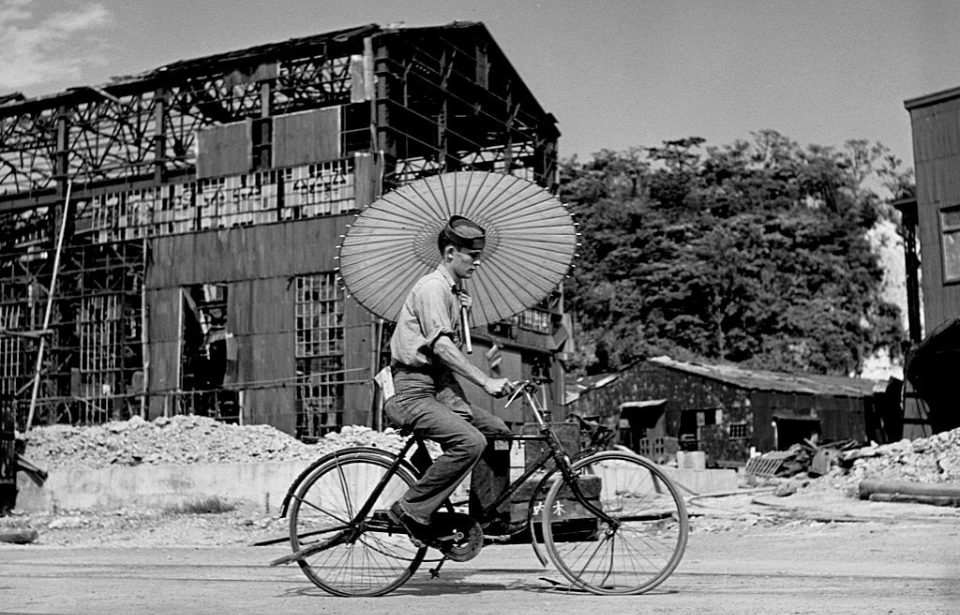During World War II, Japan employed a seemingly innocuous ally: the bicycle. As the empire faced logistical challenges and scarce resources, these manually-driven vehicles played a crucial role when it came to military strategy. This unconventional approach allowed Japan to swiftly maneuver troops, supplies and intelligence in challenging terrain, all while evading enemy detection. In particular, bicycles were used during the Japanese invasion of British Malaya in 1941-42.
Japanese invasion of British Malaya
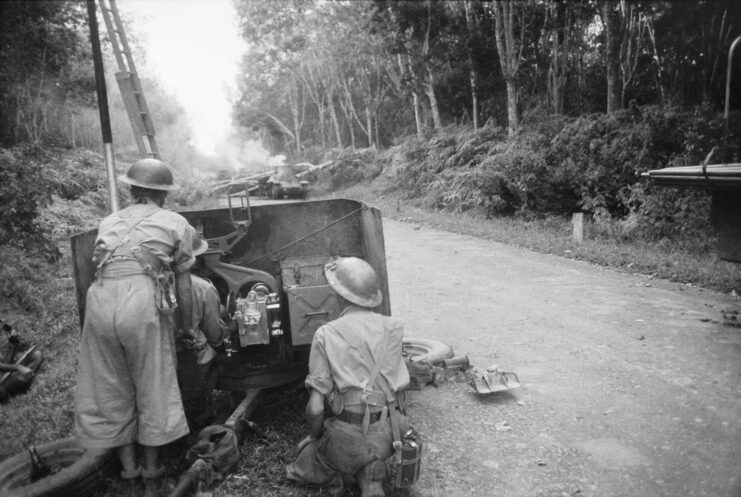
During WWII, the Malaya Campaign was a significant undertaking by the Japanese. The invasion began on December 8, 1941, just hours after the surprise attack on Pearl Harbor. The Japanese, primarily made up with soldiers from the 25th Army, swiftly advanced from their position in Thailand and successfully invaded British-controlled Malaya. This marked the beginning of the end for British colonial rule in Southeast Asia.
The Japanese utilized their superior air and ground forces, along with their expertise in jungle warfare, to overpower the British and Commonwealth troops. The fall of Malaya paved the way for the occupation of Singapore in February 1942, leading to a significant power shift in the region.
One of the factors that helped the Japanese with their successful takeover of British Malaya and other areas of the Pacific was the use of bicycle troops.
Imperial Japan’s bicycle infantry
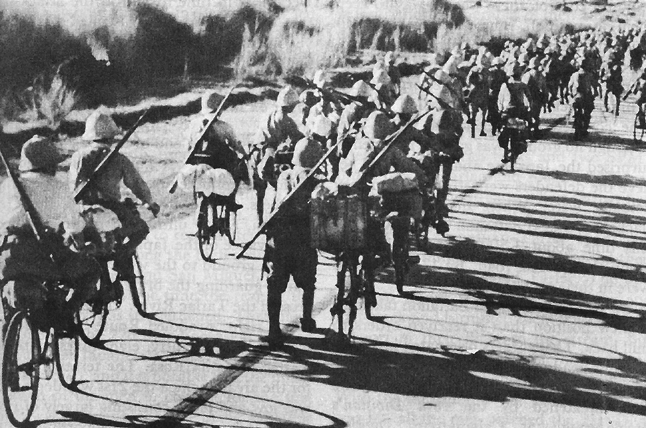
Prior to launching the attack on British Malaya, Japan decided to send many of its soldiers on bicycles, rather than horseback. Military commanders thought this would allow their men to travel faster, and they also wouldn’t have to carry the items with them during the amphibious landings – instead, they’d confiscate them from the locals.
How did they know there’d be enough bicycles in British Malaya? Well, they’d originally been imported from Japan.
Bicycles proved to be a useful item
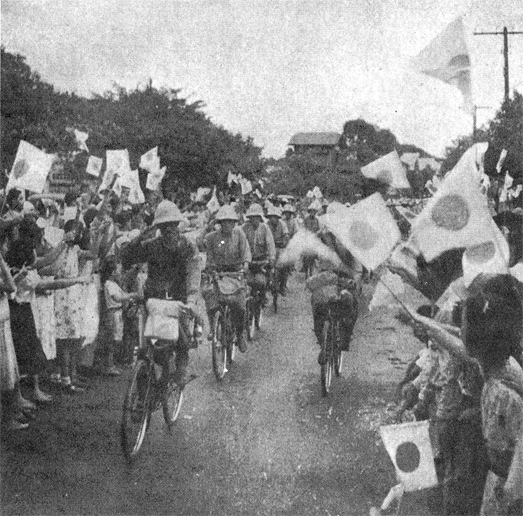
Not only were bicycles available in abundance, they also allowed the Japanese to get around the land without having to use fuel like they would with other vehicles. Their theory proved correct, as the items were extremely useful. The troops were able to use hidden paths to get around, on top of well-paved main roads.
The bicycles could be easily transported, allowing soldiers to cross rivers by carrying them on their shoulders or over small bridges rigged up by their engineers. Their use in the field also meant the Japanese could carry far more supplies than their enemies, who had to transport items on their backs.
Bicycles on the ground in British Malaya
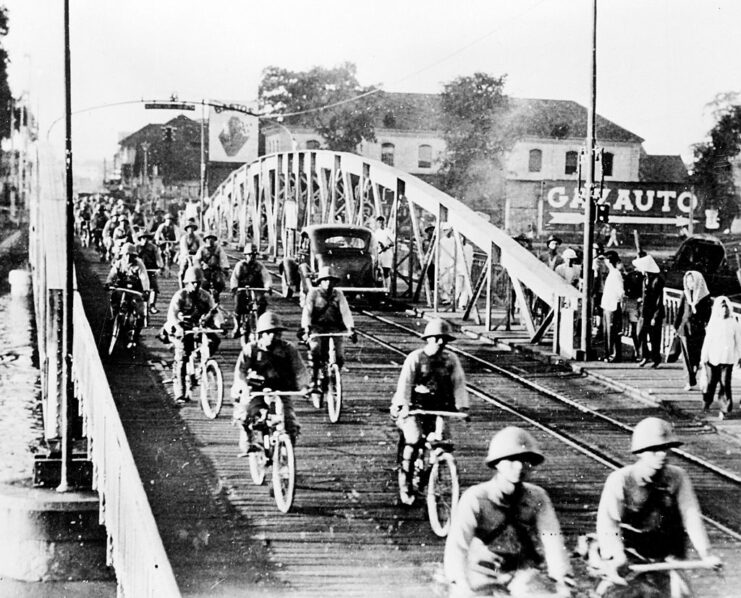
The obvious problem with the bicycles was the matter of maintaining rubber tires during war, when material shortages were rampant. Despite this, the Japanese were able to deal with punctured tires by riding directly on the rims.
Supposedly, this sounded like tank treads moving down a road. The sound often caused Allied troops to disperse in the face of oncoming “heavy machinery” on more than one occasion.
One of the Japanese troops’ favorite moves was to travel along the main roads, where they’d overtake British or Commonwealth soldiers and herd them off the paths and into the jungle. From there, they had no escape and no choice but to surrender; the Allies were simply unable to escape the bicycle troops, who’d inflicted a severe psychological and physical effect on them.
Other uses of bicycles in war
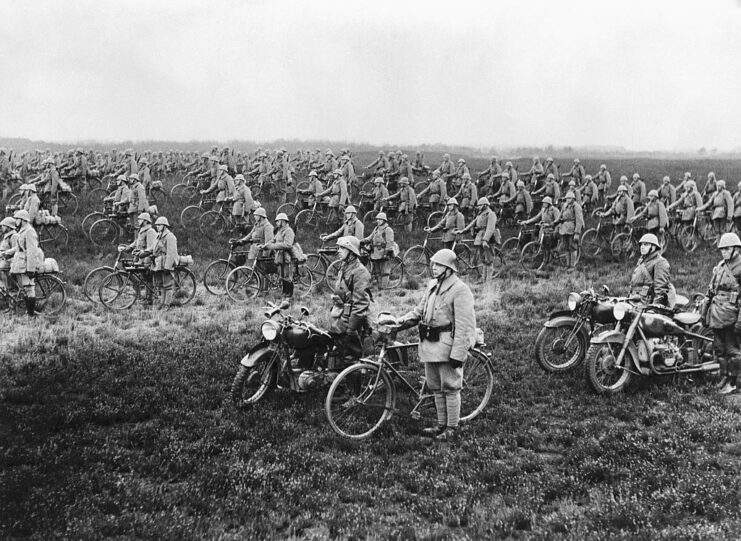
It may seem strange that the Japanese turned to bicycles in wartime, but they certainly weren’t the first. The item was used in the late 1800s and early 1900s, and troops were equipped with bicycles to move messages in World War I.
By the Second, they were widely used by all sides. In the European Theater, paratroopers employed folding bicycles to enhance their mobility upon landing on the ground, while Resistance fighters used them as a cost-effective and inconspicuous means of transportation to carry out attacks and deliver messages discreetly.
More from us: Leslie ‘Bull’ Allen Single-Handedly Rescued 12 Wounded American Soldiers at Mount Tambu
During the Vietnam War, the Viet Cong used bicycles to navigate the dense jungle and transport supplies, effectively countering the mechanized strength of their adversaries. This hasn’t change in the 21st century, as many countries still continue to use them. Until 2001, there was a bicycle regiment of the Swiss Army, and the Finnish Defence Forces still ensure recruits are trained to use the vehicles.
